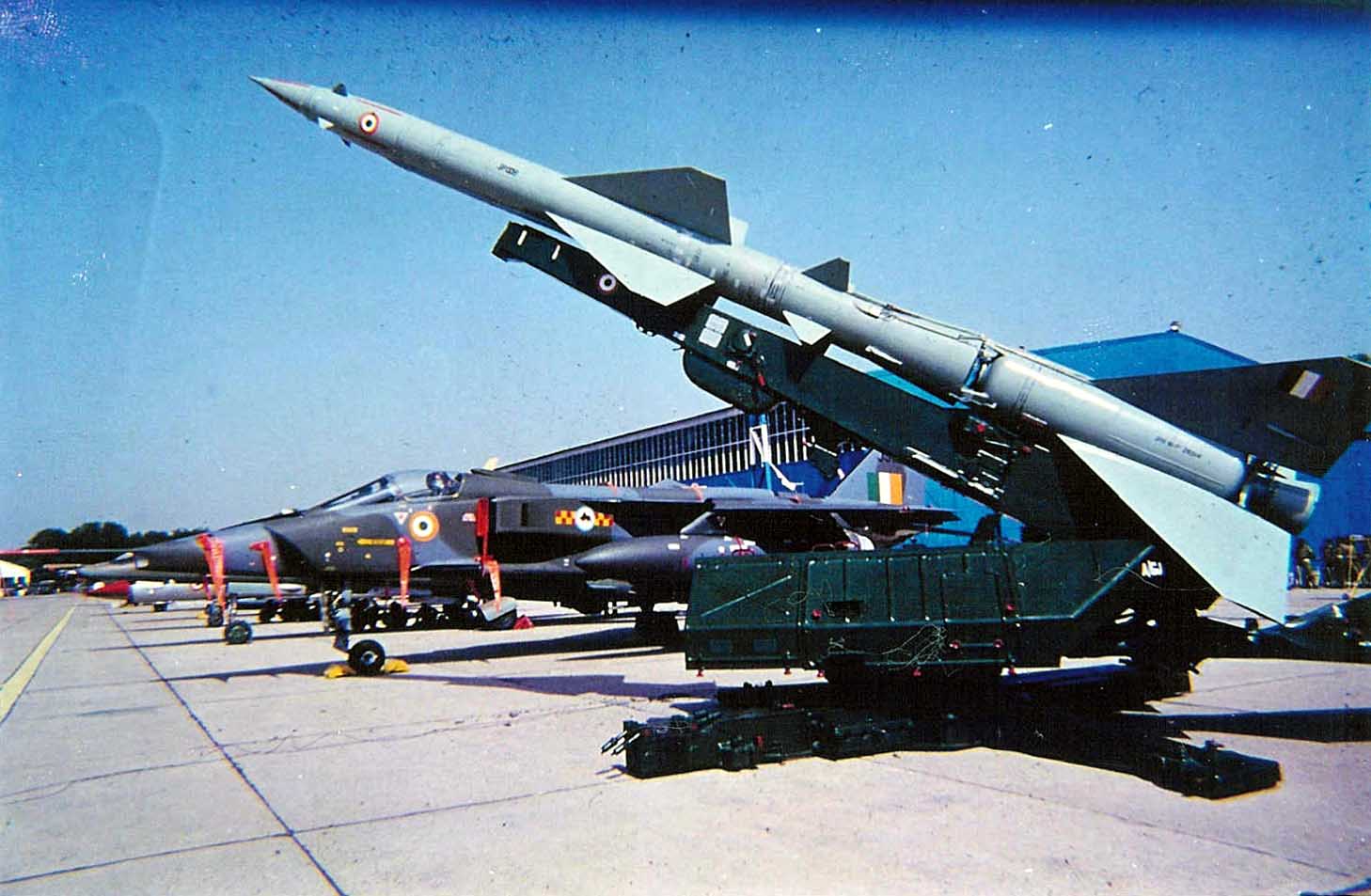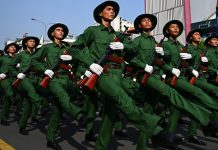Russia has some of the world’s most advanced air defense systems that dozens of countries operate.
The success of Russian air defense systems is largely due to the significant investments made by the Soviet Union in ground-based air defense (GBAD) capabilities during the Cold War.
The S-400′ Triumf’ mobile, surface-to-air missile (SAM) system is Russia’s most advanced long-range defense system. It has been exported to Belarus, India, Turkey, and China, and various other countries, including Saudi Arabia and Qatar, have shown interest in acquiring them.
Previously known as the S-300 PMU-3, the S-400 was developed in the 1990s by Russia’s NPO Almaz as an upgrade to the Soviet-era S-300 series, which is also widely used in Asia, the Middle East, and Eastern Europe.
The ongoing Russia-Ukraine is a testament to the efficacy of the S-300 system, which has been widely used by both sides and praised even by US officials for accounting for the majority of Ukrainian shootdowns of Russian fighter jets.
However, there is one Soviet-designed air defense system that happens to be one of the most widely deployed air defense systems in history and also the one that has shot down some of the most iconic American-made aircraft in history.
The S-75 ‘Dvina’
The S-75 (NATO reporting name SA-2 Guideline) is a Soviet-designed, high-altitude air defense system that can engage airborne targets up to 40 kilometers.
The system is based on the V-750 interceptor missile guided by automatic radio command from the RSNA/SNR-75 Fan Song engagement radar that could control up to two missile rounds simultaneously against a single target.
A single S-75 battery comprised six SM-90 launchers clustered around a single Fan Song engagement radar.
The S-75 was first deployed in 1957 and scored its first kill by shooting down a Taiwanese Martin RB-57D Canberra over China on October 7, 1959. However, the shootdown was attributed to Chinese fighter aircraft at the time to keep the S-75 program secret.
The missile system first rose to prominence after an S-75 battery, using the newer, longer-range, higher-altitude V-750VN (13D) missile shot down a Lockheed U-2′ Dragon Lady’ spy plane flown by CIA civilian pilot Francis Gary Powers on a mission to photograph top-secret Soviet sites.

The Soviet forces fired 14 V-750 missiles at the U2, and while none of them hit Powers’ aircraft, one of the missiles, which was at the maximum limit of its range and radar tracking ability, exploded behind the U-2 and damaged the fragile aircraft.
Prior to this incident, the Americans used to fly over Soviet Territory with impunity because of the U-2’s ability to cruise altitude of 20,000 meters, which they believed, was beyond the reach of the Soviet air defense systems.
Notably, the Soviets also shot down one of their own MiG-19 fighters in this engagement, which resulted in the pilot’s death.
The S-75 shot down another U-2 aircraft piloted by US Air Force Major Rudolf Anderson during the Cuban Missile Crisis on October 27, 1962, which almost sparked the nuclear war between the US and the Soviet Union.
Apart from that, the S-75 was extensively used in Vietnam (1966-73) and the Middle East in 1967,1970, and 1973.
The most notable use of the S-75 was during the 11-day strategic bombing campaign conducted by the US Air Force in North Vietnam in 1972, called Operation Linebacker II, which involved the use of hundreds of B-52 bombers to destroy high-value targets such as vital military installations, railway lines, energy plants, factories, etc.

The North Vietnamese missile gunners downed a total of fifteen B-52s, with six bombers shot down in one night. This was a massive blow to the legendary B-52 Stratofortress and the US Air Force.
India-Pakistan Wars
The S-75 was also used during the India-Pakistan wars of 1965 and 1971.
It was the first Surface to Air Guided Weapon to be introduced in the service of the Indian Air Force (IAF), as until 1962, air defense below 5000 feet altitude was solely the responsibility of the Indian Army.
Following the Chinese aggression of 1962, and amid the improving air defense capabilities of the Pakistan Air Force (PAF), India felt the need to improve the air defense capabilities of the IAF as well.
The S-75 system was used on two occasions during the 1965 war. First, on September 8, when one V-750 missile was fired against an unidentified target believed to have been on a night mission over Ghaziabad near Delhi.

The incident was followed by unsubstantiated reports of a Pakistani C-130 having been destroyed somewhere West of Delhi, however, no PAF aircraft ever penetrated as deep as Delhi during the 1965 conflict.
The second time the S-75 was used was on October 10, 1965, when the PAF sent one of their two RB-57D Canberra aircraft over Ambala in the state of Haryana. It was piloted by Sqn Ldr Rashid Mir and FgOffr Sultan of No 24 Squadron PAF.
The RB-57 could fly at an altitude of approximately 65,000 feet which was way beyond the reach of standard interception altitude of the IAF fighters like the MiG-21 and the Gnat Mk.1 and was therefore regarded as non-interceptable.
A salvo of three V-750 missiles was fired at the target, as the S-75 had a 90% kill probability when its interceptor missiles were launched in threes compared to just over 50% when launched in singles.
The Pakistani RB-57F was severely damaged due to the explosion of two V-750 missiles, however, the pilot managed to control the aircraft into an emergency landing at Peshawar. Furthermore, the nose gear of the aircraft did not deploy at the last minute, resulting in the aircraft sustaining further damage during the landing.
The aircraft was said to have suffered over 170 holes in the fuselage due to the shrapnel effect of the V-750 warheads. It was returned to the US for repair, and the aircraft remained with the US after that.
Following this incident, the PAF’s American-built Martin B-57 Canberra bombers carried out high-altitude bombing everywhere except at Ambala because of the presence of the S-75 system, which forced them to fly low, within reach of Indian Air defense artillery guns.
In the words of official PAF historian John Fricker, “Several IAF air bases in the Delhi area were thought to have been defended in 1965 by some of the first SA-2 missiles supplied to India by the Soviet Union, necessitating special tactics involving low-level approach. The early SA-2s were only effective at medium and high altitudes but forced attacking aircraft to operate within reach of light flak.”
After that, the S-75 was also used during the 1971 war in a couple of engagements against PAF B-57s that escaped unscathed.
Later in the war, the Pakistanis also began using decoy balloons in the Punjab area to confuse the Indian missile gunners. An unknown number of V-750 missiles were expended on these decoys.
Did An S-75 Missile Shot Down An F-15?
The S-75 still remains in use in some conflicts, for example, the Yemeni Civil War between the Saudi-led coalition forces and Iran-backed Yemeni Houthi rebels.
The Houthi rebels have reportedly modified some of their S-75s into surface-to-surface ballistic missiles to attack Saudi bases with them. The new missile system dubbed ‘Qaher-1’ is said to be capable of hitting targets as far as 500 kilometers.
Notably, in January 2018, the Houthi rebels reportedly shot down a Royal Saudi Air Force F-15 over Yemen’s capital city of Sanaa, using an unspecified surface-to-air missile.
Unverified reports suggested the F-15 may have been shot down by an S-75 Dvina surface-to-air missile, which could probably also be the Sayyad-2, an improved version of the Iranian Sayyad-1 missile, derived from the Chinese development of the Russian S-75.
However, several sources also suggested that the F-15 was targeted by an R-27T, which is said to be a modified version of the IR-homing R-27 air-to-air missile, which can be launched from pick-ups.
- Contact the author at tanmaykadam700@gmail.com
- Follow EurAsian Times on Google News




